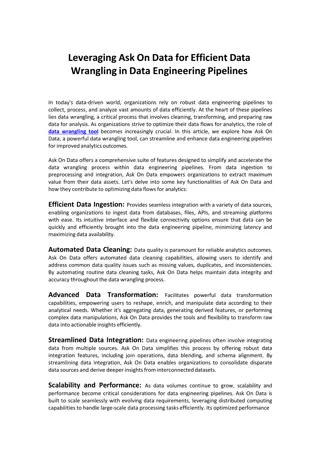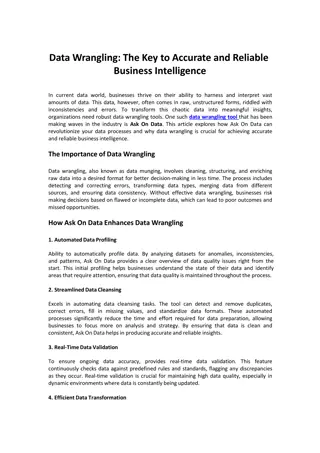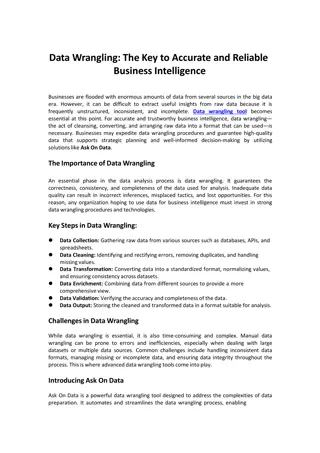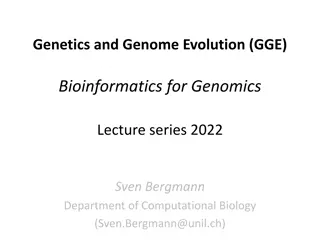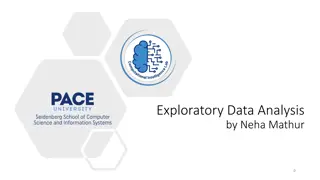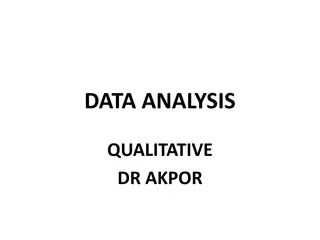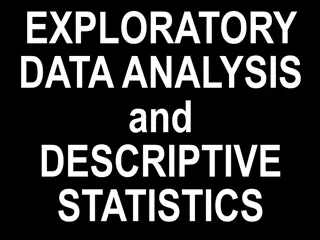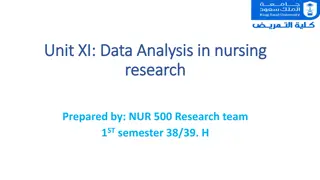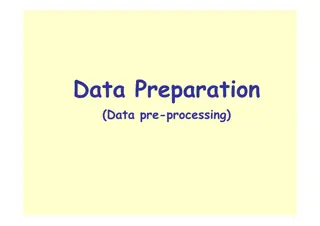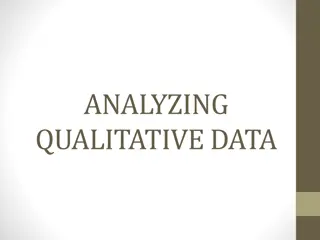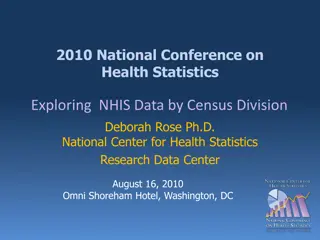
Unlocking the Power of Data Analysis in Business Decision-Making
Dive into the world of data analysis and discover how it plays a crucial role in driving informed business decisions. Learn about the importance of data analysis, its process, types, and benefits for businesses in targeting customers, reducing operational costs, and enhancing problem-solving methods.
Download Presentation

Please find below an Image/Link to download the presentation.
The content on the website is provided AS IS for your information and personal use only. It may not be sold, licensed, or shared on other websites without obtaining consent from the author. If you encounter any issues during the download, it is possible that the publisher has removed the file from their server.
You are allowed to download the files provided on this website for personal or commercial use, subject to the condition that they are used lawfully. All files are the property of their respective owners.
The content on the website is provided AS IS for your information and personal use only. It may not be sold, licensed, or shared on other websites without obtaining consent from the author.
E N D
Presentation Transcript
StudyMafia.Org Data Analysis Submitted To: Submitted By: Studymafia.org Studymafia.org
Table Contents Definition Introduction Why is Data Analysis Important? Data Analysis Process Types of Data Analysis Conclusion 2
Definition Data analysis is the process of cleaning, changing, and processing raw data, and extracting actionable, relevant information that helps businesses make informed decisions. 3
Introduction A simple example of data analysis can be seen whenever we take a decision in our daily lives by evaluating what has happened in the past or what will happen if we make that decision. Basically, this is the process of analyzing the past or future and making a decision based on that analysis. 4
Why is Data Analysis Important? Better Customer Targeting: You don t want to waste your business s precious time, resources, and money putting together advertising campaigns targeted at demographic groups that have little to no interest in the goods and services you offer. Data analysis helps you see where you should be focusing your advertising efforts. 6
Why is Data Analysis Important? You Will Know Your Target Customers Better: Data analysis tracks how well your products and campaigns are performing within your target demographic. Through data analysis, your business can get a better idea of your target audience s spending habits, disposable income, and most likely areas of interest 7
Why is Data Analysis Important? Reduce Operational Costs: Data analysis shows you which areas in your business need more resources and money, and which areas are not producing and thus should be scaled back or eliminated outright. 8
Why is Data Analysis Important? Better Problem-Solving Methods: Informed decisions are more likely to be successful decisions. Data provides businesses with information. You can see where this progression is leading. Data analysis helps businesses make the right choices and avoid costly pitfalls. 9
Why is Data Analysis Important? You Get More Accurate Data: If you want to make informed decisions, you need data, but there s more to it. The data in question must be accurate. Data analysis helps businesses acquire relevant, accurate information, suitable for developing future marketing strategies, business plans, and realigning the company s vision or mission. 10
Data Analysis Process Data Requirement Gathering: Ask yourself why you re doing this analysis, what type of data analysis you want to use, and what data you are planning on analyzing. Data Collection: Guided by the requirements you ve identified, it s time to collect the data from your sources. 11
Data Analysis Process Data Cleaning: Not all of the data you collect will be useful, so it s time to clean it up. This process is where you remove white spaces, duplicate records, and basic errors. Data Analysis: Here is where you use data analysis software and other tools to help you interpret and understand the data and arrive at conclusions. 12
Data Analysis Process Data Interpretation: Now that you have your results, you need to interpret them and come up with the best courses of action, based on your findings. Data Visualization: Data visualization is a fancy way of saying, graphically show your information in a way that people can read and understand it. 13
Types of Data Analysis Diagnostic Analysis: Diagnostic analysis answers the question, Why did this happen? Using insights gained from statistical analysis (more on that later!), analysts use diagnostic analysis to identify patterns in data. Ideally, the analysts find similar patterns that existed in the past, and consequently, use those solutions to resolve the present challenges hopefully. 14
Types of Data Analysis Predictive Analysis: Predictive analysis answers the question, What is most likely to happen? By using patterns found in older data as well as current events, analysts predict future events. While there s no such thing as 100 percent accurate forecasting, the odds improve if the analysts have plenty of detailed information and the discipline to research it thoroughly. 15
Types of Data Analysis Prescriptive Analysis: Mix all the insights gained from the other data analysis types, and you have prescriptive analysis. Sometimes, an issue can t be solved solely with one analysis type, and instead requires multiple insights. 16
Types of Data Analysis Statistical Analysis: Statistical analysis answers the question, What happened? This analysis covers data collection, analysis, modeling, interpretation, and presentation using dashboards. 17
Types of Data Analysis Qualitative Data Analysis: The qualitative data analysis method derives data via words, symbols, pictures, and observations. This method doesn t use statistics. The most common qualitative methods include: Content Analysis, for analyzing behavioral and verbal data. Narrative Analysis, for working with data culled from interviews, diaries, surveys. 18
Types of Data Analysis Quantitative Data Analysis: Statistical data analysis methods collect raw data and process it into numerical data. Quantitative analysis methods include: Hypothesis Testing, for assessing the truth of a given hypothesis or theory for a data set or demographic. Mean, or averagedetermines a subject s overall trend by dividing the sum of a list of numbers by the number of items on the list. 19
Conclusion Data analysis includes the inspection, modification, modeling, and transforming of data as per the need of the research topic. The conclusion is the final inference drawn from the data analysis, review of literature, and findings. 21
Thanks Thanks To To StudyMafia StudyMafia.org .org


